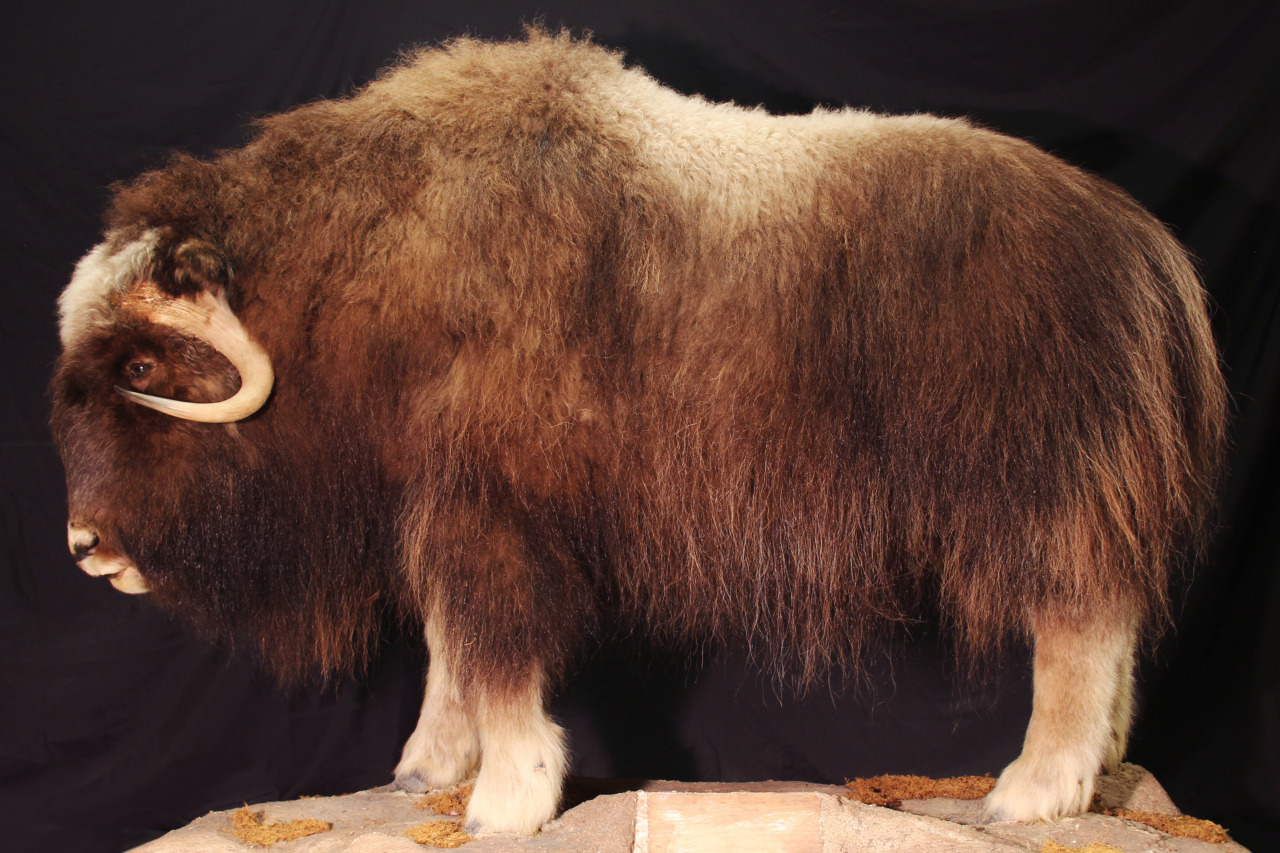“Muskoxen are hulking wanderers, and it is therefore quite suitable for them to make their home in the boundless expanses of one of Earth’s greatest ecosystems - the Arctic tundra. For a muskox, summer begins when he finally descends from barren high grounds to damp river valleys, trading the Arctic willow for the succulent grasses of the lowlands previously laden with deep snow.
For me, a summer student working in the Cowan Tetrapod Collection, summer began when I helped welcome a new addition to the collection. It would be at least a year before he would go on display and because storage space is tight in a museum like Beaty, the muskox and I bunked together behind the scenes in a cramped curatorial room. As I went about my work arranging bones and photographing bird specimens, I began to realize not only how important my new companion was for the museum, but also for all his kin still roaming wild in the Arctic.
Muskoxen are masters of the tundra and are some of the few large mammals able to survive every season of this harsh environment. Although management regulations have recently released them from the persecution of two centuries of overhunting, they still face an increasingly more immediate threat – habitat loss due to accelerating climate change. Since the Pleistocene, a changing climate has characterized the contracting range of the muskox. The herds that extended as far south as Kansas 20 000 years ago are now restricted to the northern rim of the continent. While muskoxen no longer roam as far south as the Okanagan valley, such ecological change has been drawn out over thousands of years of natural glacial cycles. Now it is occurring within a single muskox generation.”
Julian Heavyside, Student at UBC.
